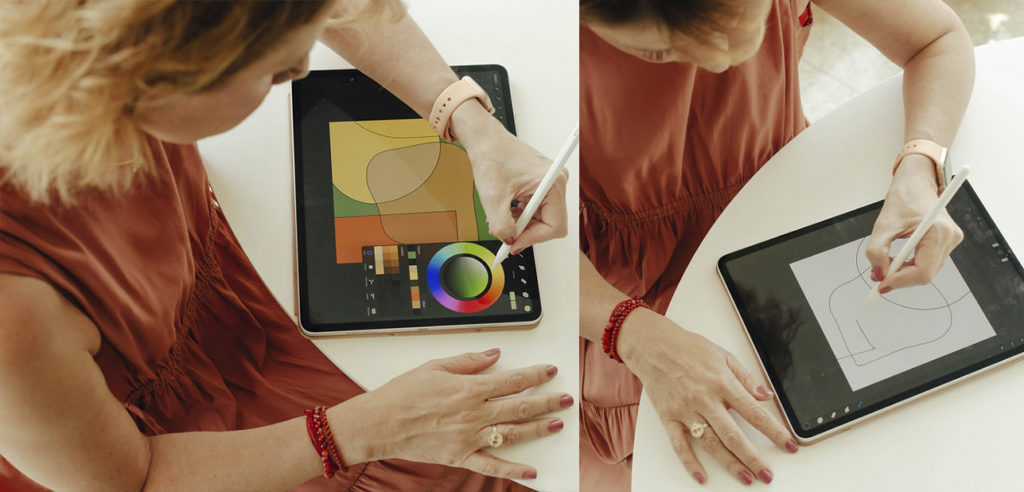In today’s digital age, technology has revolutionized almost every aspect of our lives, including the world of quilting. Quilting design apps and quilting design software have become popular tools for quilters looking to enhance their creativity and streamline their design process. These programs offer a wide range of features and functionalities that make designing quilts easier and more efficient than ever before. In this article, we will explore some of the top quilting design programs available to quilters, such as Quiltography and Prequilt, and discuss how traditional design software can also be utilized in a quilter’s workshop.

Exploring Quiltography: A Mobile Quilt Design Solution
Quiltography stands out as a pivotal tool for quilters who wish to harness the power of technology directly from their mobile devices. This app transcends the traditional boundaries of quilting by offering an array of innovative features tailored to enhance the creative process. Its ease of use begins with a straightforward interface, inviting quilters of every experience level to dive into design without the steep learning curve often associated with digital tools.
One of the hallmark features of Quiltography is its comprehensive library of block patterns and fabric swatches. This feature not only enables users to experiment with an extensive variety of designs but also allows for immediate visual feedback by incorporating different fabrics and colors into their projects. Such immediate visualization is invaluable, particularly when deciding on the perfect combination of textures and hues for a quilt.



Moreover, the app’s customization options extend beyond mere aesthetics. Quilters can adjust dimensions, play with color schemes, and even simulate the finished product in a real-world setting using the app’s innovative photo feature. This ability to preview a quilt in a physical space before the first cut is made or the first stitch is sewn is a game-changer, providing a level of assurance and creativity that was previously hard to achieve.
Quiltography’s emphasis on mobility and user-friendly design empowers quilters to carry their design studio in their pocket. Whether waiting in line, traveling, or lounging at home, inspiration can strike anywhere, and Quiltography ensures that when it does, quilters are ready to capture and develop their ideas on the spot.
Prequilt: Bringing Community and Creativity Together
Prequilt stands as a beacon for quilters who value the intersection of innovation and community. This quilt design app goes beyond the basics of pattern creation, offering an interactive platform where quilters can not only design but also engage with a vibrant community of like-minded individuals. The essence of Prequilt lies in its collaborative nature; users are encouraged to share their quilt designs, gather feedback, and even partake in communal projects that foster a sense of belonging and collective creativity.
The app is equipped with an intuitive suite of design tools that cater to quilters at every skill level. From an expansive selection of block templates to a diverse range of color palettes and layout options, Prequilt makes it simple for users to translate their quilting ideas into tangible designs. This accessibility is crucial for inspiring quilters to experiment and refine their craft without the barriers of complex software.


What sets Prequilt apart is its commitment to creating a nurturing environment where quilters can thrive. The platform facilitates connection through design sharing and collaboration, allowing users to draw inspiration from each other’s work, offer constructive criticism, and celebrate collective achievements. This approach not only enriches the individual’s creative process but also contributes to the growth and dynamism of the quilting community as a whole.
By prioritizing user interaction and creative exchange, Prequilt embodies the spirit of contemporary quilting, where tradition meets technology, and community flourishes alongside creativity.
Traditional Design Software in a Quilter’s Workshop
While the digital quilting landscape is often dominated by specialized apps, the potential of traditional design software in quilting cannot be overstated. Tools like Adobe Illustrator and AutoCAD, not traditionally associated with the crafting world, bring a powerful suite of capabilities to the quilter’s table. These programs enable the creation of highly detailed and complex quilt patterns that may surpass what’s possible with more focused quilting apps.
For quilters willing to climb the learning curve, these software options unlock a world of precision and creative freedom. The ability to manipulate shapes, lines, and colors with pinpoint accuracy allows for the realization of intricate designs that push the boundaries of quilting artistry. Furthermore, these traditional programs offer extensive customization, enabling quilters to tweak every aspect of their design—from the overall layout down to the smallest detail.

Integrating these software tools into a quilter’s practice facilitates a blend of engineering and art, where technical tools are wielded with creative intuition. This approach not only diversifies a quilter’s design capabilities but also encourages a deeper exploration of quilt design as a form of expression. The adaptability and robustness of traditional design software mean that quilters can conceptualize and execute projects that are both ambitious in scope and exquisite in detail.
The exploration of traditional design software by quilters represents a fascinating cross-pollination of disciplines, proving that the most effective tools for creative expression are often those that are adaptable and open to reinterpretation in the hands of skilled and imaginative users.
The Advantages of Using Quilting Design Software
Embracing quilting design software introduces quilters to a world of unparalleled creativity and efficiency. These digital tools empower users to visualize their projects with an accuracy and detail that traditional methods might not provide. With functionalities that allow for the manipulation of patterns, colors, and layouts, quilters can explore a myriad of design possibilities without the need for physical materials, thus reducing waste and saving on costs. One significant benefit of using quilting design software is the ability to precisely calculate fabric requirements. This feature ensures that quilters can optimize their material usage, making the process of planning and executing quilt projects both economically and environmentally more sustainable. Additionally, the convenience of creating custom templates and resizing patterns at the click of a button further streamlines the design phase, allowing for a smoother transition from concept to creation. These digital platforms not only foster a deeper engagement with the craft by offering tools that cater to both novices and seasoned professionals but also promote a level of experimentation and innovation that could expand the boundaries of quilting as an art form. Through the integration of quilting design software, the quilting process becomes a more dynamic and accessible art, enabling quilters to achieve their artistic visions with greater ease and precision.
Tips for Choosing the Right Quilting Design Program
Selecting the ideal quilting design program is a crucial step in blending your quilting aspirations with digital convenience. To navigate this choice effectively, it’s important to assess your personal proficiency and what you aim to achieve with your quilting projects. Programs vary greatly, with some tailored towards those just beginning their digital quilting journey, offering straightforward functionalities and user-friendly interfaces. Conversely, more experienced quilters might seek out programs endowed with advanced features that cater to complex design requirements and offer greater customization.
Functionality should be a cornerstone of your decision-making process. Identify the specific features you deem essential for your quilting projects. Whether it’s an extensive library of quilt blocks, the ability to tweak color palettes effortlessly, or sophisticated pattern manipulation tools, your chosen software should align with your creative workflow and design objectives.

Budgetary considerations and system compatibility also play pivotal roles. With options ranging from free applications with basic features to premium versions offering a wealth of design possibilities, it’s important to evaluate the cost against the value it adds to your quilting experience. Additionally, ensuring that the software is compatible with your existing hardware will prevent potential frustrations, allowing for a seamless integration into your creative process.
By meticulously weighing these aspects, you’ll be better positioned to select a quilting design program that not only fits your technical requirements and creative desires but also enhances your overall quilting experience.
The Future of Quilting: Trends in Design Technology
The horizon of quilting is rapidly expanding with the integration of emerging technologies that promise to redefine traditional practices. Innovations such as virtual reality (VR) and artificial intelligence (AI) are at the forefront of this transformation, offering quilters unprecedented ways to conceptualize and visualize their creations. VR technology invites quilters into immersive environments where designs can be manipulated in 3D space, offering a tactile sense of scale and pattern unlike any other. AI, on the other hand, is paving the way for intelligent design assistants that can suggest pattern variations, optimize color schemes, and even generate unique quilting patterns based on a quilter’s style and preferences. These advancements are not just about enhancing the design phase; they’re about creating a more interactive and personalized quilting experience. As these technologies become more accessible, quilters will find themselves equipped with tools that not only streamline the creative process but also inspire innovation in quilt design. The fusion of quilting with these cutting-edge technologies signals a new era where the boundaries of creativity are continually being expanded, making the future of quilting an exciting realm of endless possibilities.


